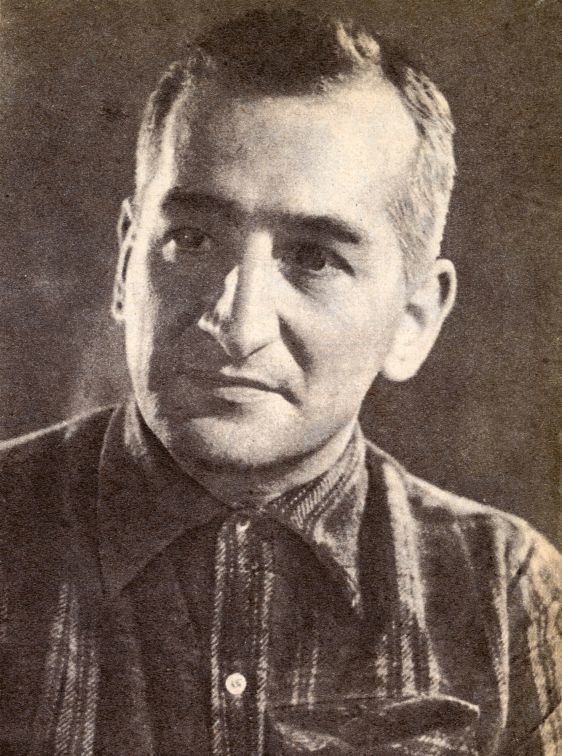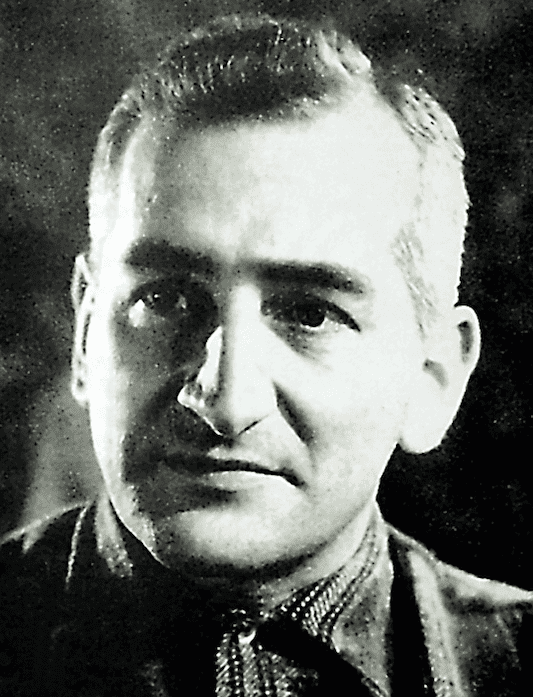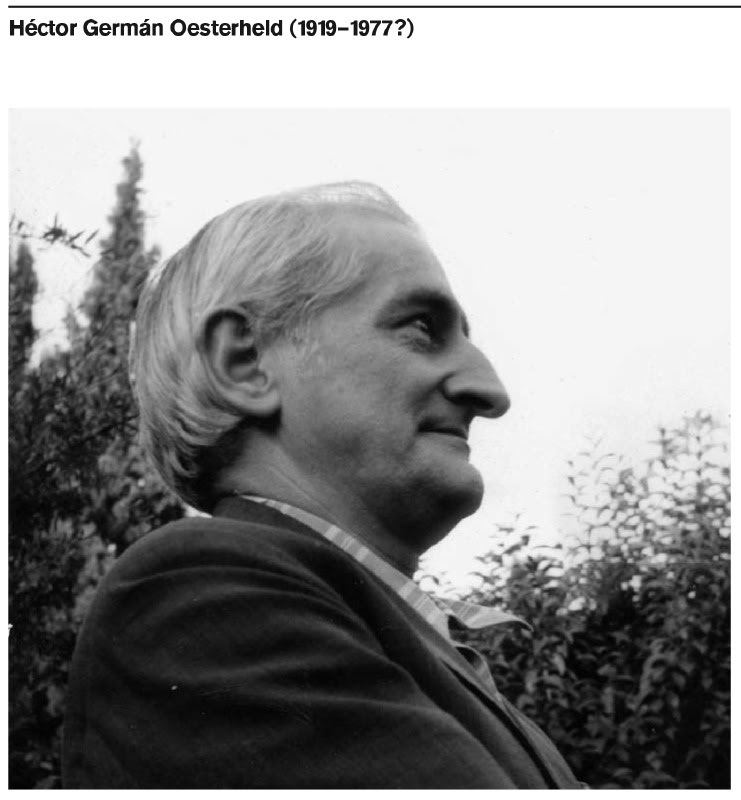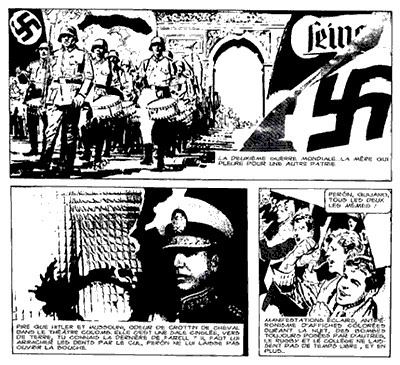Nationality Argentine Died 1977 Role Journalist | Name Hector Oesterheld Area(s) writer | |
 | ||
Born July 23, 1919Buenos Aires, Argentina ( 1919-07-23 ) Notable works El Sargento KirkErnie PikeEl EternautaMort CinderLa Vida del Che Books Sgt. Kirk, The Eternonaut, Evita, vida y obra de Eva Peron Children Diana Oesterheld, Marina Oesterheld, Estela Oesterheld, Beatriz Oesterheld | ||
Biogr ficos h ctor germ n oesterheld canal encuentro hd
Héctor Germán Oesterheld, also known as his common abbreviation HGO (born July 23, 1919; disappeared and presumed dead 1977), was an Argentine journalist and writer of graphic novels and comics. He has come to be celebrated as a master in his field and as one of the pioneering artists in Argentine modern comics.
Contents
- Biogr ficos h ctor germ n oesterheld canal encuentro hd
- Literatura y pol tica h ctor germ n oesterheld cap tulo 2
- Biography
- Legacy
- References

Through his comics, Oesterheld criticized the numerous military dictatorships that beleaguered the country in different periods ranging from 1955 to 1983, as well as different facets of capitalism, colonialism and imperialism, choosing a subtle criticism in his early comics during the 50's and early 60's, and a stronger and direct approach in his later work, after the murder of Che Guevara in 1967, and onwards from then on: in 1968 he wrote a biographical comic of Che Guevara, which was subsequently banned by the Argentinian dictatorship ruling at the time.

During the Argentina's last civil-military dictatorship, he and his daughters joined the Montoneros, a leftist (and former peronist) guerrilla group that opposed the military junta. HGO continued to publish works in clandestine form while hidden in secret locations, but he was ultimately kidnapped and disappeared. His daughters were also arrested and disappeared, as were his sons-in-law. Only HGO's wife, Elsa, escaped the family's tragic fate.

Over the years, Oesterheld's legacy has become vast, influencing several generations of new artists, particularly in literature and comic books.

Literatura y pol tica h ctor germ n oesterheld cap tulo 2
Biography

Oesterheld was born in Buenos Aires to a German father and a Basque mother. His early studies were in geology, which has been said to contribute to his acuity as a science fiction writer. He began his journalistic career in the early 1940s. His first work appeared in the daily La Prensa newspaper and then was published by Codex. He moved to Abril publishers, where he began his extensive career as a comics writer.
Soon after, he married Elsa Sánchez. Their first daughter, Estela, was born in 1952, Diana a year later, Beatriz in 1955, and Marina in 1957.
Oesterheld was befriended by a group of postwar Italian comics writers, including Mario Faustinelli, Hugo Pratt, Ivo Pavone, and Dino Battaglia, also known as the Venice Group. Together these artists and writers became part of what is known as the "Golden Age of Argentine Comics." They merged into an international scene of artists and writers whose works were published worldwide.
In 1957 Oesterheld and his brother Jorge founded Editorial Frontera. Together they published various comic magazines, including Hora Cero Semanal (weekly), Hora Cero Mensual (monthly), and Frontera Mensual (monthly).
In 1958 he started writing El Eternauta, probably his most popular and critically acclaimed work. The strip, with artwork by Francisco Solano López, told the story of his meeting with a time traveler, who had already lived over 100 lives and has journeyed to the past to warn the protagonist of a future catastrophe. The strip was published in Hora Cero over 106 weekly episodes and was a massive success.
His publishing house closed 5 years later due to a combination of the economic crisis sweeping Argentina in the 1960s, foreign competition, and the exodus of Argentine comic artists to Europe. Oesterheld continued writing for other magazines such as Zig-Zag.
His work slowly acquired a greater political emphasis. His 1968 biography of Ernesto 'Che' Guevara, a year after Che's death, was removed from circulation by the government and the originals destroyed. In 1970 he wrote a scathing critical biography of Evita Peron, dedicated to Che Guevara. In 1973 he published 450 Years of War Against Imperialism. During the military government of the 1970s, Oesterheld is believed to have joined, following his four daughters, a leftist guerrilla group, the Montoneros. His story El Eternauta, Part II (1976) described a futuristic Argentina under a dictatorship.
In 1976 Oesterheld disappeared. He was last recorded as seen alive in late 1977 or early 1978. His family believed he was among the tens of thousands to have been disappeared and killed by the government. In 1977 his daughters, Diana (21), Beatriz (19), Estela (25) and Marina (18), were arrested by the Argentine armed forces in La Plata. None were seen again, and they all presumed dead. His daughters' husbands were also disappeared (desaparecidos).
One grandson, Martín, was born in captivity. Oesterheld's widow, Elsa Sánchez, learned about the boy and recovered him from government custody, although she never saw her daughter again. She raised Martin. A second grandson, Fernando, born earlier, was raised by his paternal grandparents.
Elsa Sánchez participated in the protests of the Mothers of the Plaza de Mayo. She became one of the spokeswomen for the Grandmothers of the Plaza de Mayo, which advocates for the return of children of the "disappeared" to their birth families.
When the Italian journalist Alberto Ongaro enquired about Oesterheld's disappearance in 1979, he received the reply: "We did away with him because he wrote the most beautiful story of Ché Guevara ever done". Argentine journalist Jacobo Timmerman, in his memoir of his own captivity, Prisoner Without a Name, Cell Without a Number (1981), recalls seeing Oesterheld in 1977 across the hall in a prison. In a report to the Argentine National Commission on the Disappearance of Persons, which published its findings in 1984 entitled Nunca Más, Eduardo Arias recalls seeing Oesterheld between November 1977 and January 1978. He said the man was in terrible physical condition and at the secret detention center El Vesubio, which prisoners had sardonically named "the Sheraton".
Legacy
Oesterheld worked with artists including Hugo Pratt, Alberto Breccia, Francisco Solano López, Ivo Pavone, Dino Battaglia, as well as Horacio Altuna, José Massaroli, Eugenio Zoppi, Paul Campani, Gustavo Trigo, Julio Schiaffino and others.
His most famous opus, El Eternauta, remains one of the key literary works of Argentine culture; it is constantly reprinted for new audiences. The bulk of his oeuvre is currently being reprinted in Argentina and around the world.
